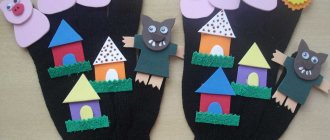Construction and imagination
Imagination is an important quality for each of us! It is on a par with such qualities as creativity, imagination, and the ability to think outside the box. Why do we need it? Why is this so important?
The thing is that imagination is an indispensable component of a successful person and a creative person these days.
A person without imagination is unlikely to achieve much success in life. And his life, most likely, will be boring, without a creative component.
In the age of robotization of production, more and more operations are performed by robots. Today, a robot bricklayer, a robot taxi, and a robot banker have already been created. Smart machines are gradually replacing people in various fields of activity and they are losing their jobs.
But what robots cannot do and what they will never learn is creativity. For example, the same robot does not and cannot have imagination.
Therefore, a creative person will always be in demand and there will always be work for him.
So what to do if a child (or even an adult) does not have a developed imagination?
It turns out that getting this ability is quite simple!
Construction has a powerful influence on the development of a child’s creative abilities. Moreover, stimulating the imagination during the design process is a proven fact.
Moreover, with the help of a designer, not only a child, but also an adult can become a person with a rich imagination!
This time we will talk in more detail about how to use constructors and develop with their help.
Practical aspects
Papermaking classes are organized in accordance with the federal state educational standard for preschool education (FSES), Federal Law No. 273 of December 29, 2012 “On Education in the Russian Federation” and SanPiN 2.4.1.3049-13. Teachers draw up a work plan and technological maps for each lesson.
Technological maps and diagrams
The technological map should reflect the following points:
- topic of the lesson;
- the purpose of the activity and its objectives;
- preliminary work;
- didactic materials and equipment;
- description of the stages of the lesson (organizational moment, main and final parts) indicating their duration, words of the teacher, expected answers and actions of the children.
Lesson duration
The preparatory group conducts design classes lasting 15-25 minutes.
They include the following steps:
- organizational moment - 1-3 minutes;
- demonstration and explanation of working methods - 3-5 minutes;
- independent activity of pupils - 5-10 minutes;
- discussion of crafts - 2 minutes;
- final part - 1 minute.
Introductory materials
To familiarize children with the topic of the lesson and create motivation, game techniques are used.
Their choice depends on the imagination of the teacher:
- riddles (to introduce the hero);
- game “Hide and Seek” (children find a toy using sentences, for example “The doll is behind the closet”);
- exercise “Guess” (the teacher shows 4 pictures and asks to recognize the guest by naming his signs);
- game technique “Letter” (the wizard sends a letter in which he asks the children to help him do something);
- “The fourth odd one” (out of 4 toys, students must choose the one that is different from the rest - it will be the heroine of the lesson).
The benefits of construction for children
Almost all children and almost all adults love to design. It’s just that not everyone admits it! Modern psychologists believe that the love of design is inherent in us as an instinct.
Designers give us, first of all, the development of imagination and creative thinking.
The peculiarity of construction kits is that they usually come with assembly diagrams and instructions. And this, oddly enough, is not always good. But even assembly instructions do not prevent children from developing!
Very soon they get tired of following the schemes, and their imagination and fantasy burst out! Children get creative and come up with their own, sometimes very strange and unusual, objects.
Along the way, they create new things, create, analyze, plan, and act consistently. All this is extremely important for their life as well as their studies.
Influence of designers:
- they provide spatial imagination;
- the ability to understand the properties of geometric shapes;
- help to understand concepts such as shape, size;
- develop imagination, creativity, creativity;
- help to use directions;
- and, finally, they develop independence, perseverance, and hard work - without this, even the most vivid imagination will not result in a worthy result.
What to do when you grow up
Construction sets are useful for children.
Sometimes it even affects their future. What to do if you lack design skills after 18? We have collected several tips that have been tested by ourselves, time and Giktayms. Play with children.
This is a pain-free way to try out a bunch of construction kits. By the way, they say that construction is a good prevention of Alzheimer’s disease.
Start a hobby.
Apple engineer Andrew Carroll made a working copy of the Antikythera Mechanism using Lego.
And you can’t say that you wasted your time.
Make a business.
This is an excellent design option with unpredictable results. You can even make your own construction set and sell it.
If you stay in the small business niche, we have come up with a website builder for you.
Design websites.
The good thing about this option is that with the current level of technology development it is suitable for many - knowing HTML is no longer necessary.
Start Arduino.
This method is described on Giktayms on average once a day.
Be nostalgic.
When we did a survey within the company, people recalled how they kept and passed on children’s construction sets, made things out of sticks and ropes, and... how “every thing, after disassembling, turned into a construction set.”
Facts and Research
Interesting fact. At the end of the nineteenth century, very realistic construction sets that recreated houses began to be produced in Germany. It was called Anker-Steinbaukasten. These were “stone” blocks made from a mixture of chalk and quartz.
From them you could collect copies of buildings, or come up with your own versions. This is exactly the kind of designer Max Born, Albert Einstein, and Robert Oppenheimer had. And these people cannot be denied a lack of imagination, do you agree?
Numerous studies by scientists confirm that methods and techniques based on construction perfectly develop not only the imagination. This list also includes: fine motor skills, mathematical abilities, independence, speech, logic. And most importantly - interest in creating new things, and creativity!
Card index of topics
When choosing a topic, the teacher takes into account the time of year, public holidays and other important events in people's lives.
A topic index might look like this:
- “Autumn Forest”: mushrooms, trees, animals, etc.;
- “Favorite fairy tale characters”: bun, hare, pig, bird;
- “My city”: houses, gates around them, streets, traffic lights;
- “My Home”: creation of one- and multi-story houses;
- “Winter”: Christmas tree, bullfinch, snowflake, snowman;
- “New Year”: New Year cards, Santa Claus sticks;
- “February 14”: valentines, paper hearts;
- “February 23”: gifts for dads;
- “Transport”: cars of different types;
- “Furniture”: sofa, bed, armchair, etc.;
- “March 8”: gifts for mothers;
- "Children's Day": paper toys.
The wonderful influence of Lego on a child's development
In this regard, the story of my friends’ son is very indicative. The boy lagged behind his peers, including in terms of abilities. Even completing assignments in kindergarten was difficult for him. He didn't want to write and draw, sculpt and take tests. Everything caused furious protest!
And then his wise dad bought his son several construction sets. It was both traditional Lego and new, more complex variations on the theme. Dad and son designed together, and they were fascinated by the activity!
After some time, the boy became more diligent and began to show interest in mathematics. He knew very well how to make a model following the instructions. Moreover, I began to come up with my own models! By the first grade, it became clear that he was a smart, quick-witted child with a well-developed imagination.
That is, the designers make us into “my mother’s engineer”?
A)
Indian psychologists believe yes:
Underlined in red: “Passed by designers and reads engineering magazines—techie!”
- Thanks, Cap! (screen from the book General Psychology, 2003) B)
The Soviet teacher Makarenko thought similarly: “Play in a child’s life has the same meaning as activity, work, service in an adult. As a child is at play, so in many ways he will be at work when he grows up.” Sounds logical, but...
C) Actually, we don't know.
And just for fun, we conducted a mini-research at our place. About a third of the employees were interviewed. Half are developers and system administrators (20 people), half are managers, marketing, designers, lawyers and accounting (20 people).
Four questions were asked. Two in the questionnaire were mandatory. Above are the answers to the first required question.
Here are the answers to the second mandatory question:
Let's move on to the breakdown of “techies” and “non-techies”.
In the “technical” group, 16 people often played with construction sets as children. Ten are sure that this influenced their choice of profession (“I started with construction sets, then began assembling computers, websites, etc.”); three are sure that it was not. The rest are undecided.
In the “non-technical” group, designers loved almost the same in childhood - 15 people. Five see the connection: “I started with construction sets, began to assemble computers, websites, etc.” are designers and project managers. Seven do not see a connection between their choice of profession and their childhood hobbies.
G)
I wonder, do you feel a connection between what you played as a child and who you have become? Please tell us - mini-survey at the end of the post.
Construction as a development stimulus for a child
Construction really helps solve some problems and gaps in development. It will also help to discover numerous talents, including developing imagination and creative qualities. The most important condition for this is the game!
Design should not become a duty, a responsibility, a lesson. This game is an ideal activity, interesting and not boring for both children and adults.
It is extremely important that children have access to a wide variety of construction toys. The more there are, the more possible options, the wider the field for imagination. By constructing, a person constantly improves his thought processes, his imagination, fantasy, and creativity.
Main types of construction sets for children
- Cubes are a real “classic”, a primitive but effective construction set for kids. It introduces shape, color, texture. And it makes it possible to come up with your own models, albeit primitive ones.
- Inserts help to learn how to compare the shapes and sizes of elements, but practically do not develop imagination.
- Mosaic - develops imaginative thinking, because from it you can assemble your own, real picture!
- Block type constructors. You can create anything from these, give free rein to your imagination! You can make houses, airplanes, rockets, whatever!
- Lego is the maximum advantage of a regular construction set, plus the possibility of more complex 3D modeling, consisting of hundreds and thousands of parts. There are practically no limits to the imagination, because here you can make any fantasy come true!
By the way, it is free design (without instructions, tips and diagrams) that opens up the opportunity for children and adults to think outside the box. And also - give free rein to your imagination, fantasize from the heart.
That's all! Develop your imagination and other important skills. And design for your own pleasure, no matter whether you are a child or an adult. Be sure to subscribe to updates on this channel to receive even more important, useful information.
Comments here are also very welcome. If you think this article might be useful to your friends, please share it on social networks. Good luck to you!




